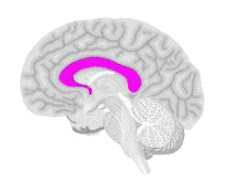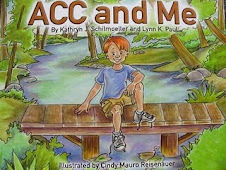
Alexandra Berube, the former Kindergarten teacher, who taught a student with Agenesis of the Corpus Callosum (and who also tutors the student - who is currently in 3rd grade), has written several guest blog articles here about her teaching experiences.
Alexandra welcomes questions from you--if you might have a question.
The second question for Alexandra comes from the parent of an 8 year old child who has ACC, after the parent read Alexandra's previous Multiplication article.
The parent writes:
"This article came at the perfect time as my daughter is now working on multiplication. This is just what I needed to help her as she is struggling with it. Now if we can figure out how to help her find the key words to do word problems. Whatever math concept she did on the regular problems, she just automatically assumes it is what she does on the word problems, not realizing it could be different."
GUEST BLOG POST - Reply to Question
Mathematics from the Beginning (Struggles Overcome in Kindergarten)
by Alexandra Berube, bostontutoringservices.com
In Kindergarten, it seemed at first that *Max did not have a strong understanding of one-to-one correspondence (he would count something twice or recount something). With more practice, however, it seemed that he may have been having difficulty with the task of physically counting objects with his hand and remembering how many objects he had touched. The combination of tasks—physically touching and cognitively counting—may have been challenging for him, rather than the concept of one-to-one correspondence itself. We found that drawing a dot for each time he counted worked better, because he was in control of each mark he was putting down, which helped him retain that he had counted the number, versus just touching an object. We have used dot-drawing ever since over physical manipulatives.
The concept that Max struggled with the most was patterns. He had difficulty continuing patterns that had already been generated, or recognizing a set pattern. For example, the children played a game in which one child made a pattern and covered up the last four objects with cups. The other child had to guess which colors the objects under the cups were, based on continuing the pattern that they could see. This was called ‘breaking a pattern’ to find a ‘unit’ of a pattern.
This was rather challenging for Max; although he understood the concept of a pattern, and was usually able to create his own patterns using math manipulatives, he had difficulty making more complex patterns and breaking patterns into units. When it was his turn to generate a pattern for his partner, he was able to build very simple patterns (like ABAB patterns), but he clearly understood what a pattern was. He just couldn’t ‘see’ a ‘unit’ of a ready-made pattern very well. With practice building his own patterns, the skills transferred over so he could recognize already-made patterns better over time. He needed to keep doing the skill on his own terms in order to recognize the skill in other students and out in the world, wherever patterns are found.
Abstract story problems are the hardest for most children, and for Max they have always been a struggle to ascertain what the problem was asking. A big piece of story problems that is challenging is when it states something like, “Bob has 5 more carrots than Kate. Bob has 8 carrots. How many carrots does Kate have?” It’s hard for children to understand that this means they need to subtract. The wording on these problems is confusing, but having Max draw dots for each sentence helped a lot. If the first sentence doesn’t tell us a specific number, we know we need to work backwards and start with the second sentence. Draw 8 carrots for Bob. This is 5 more than Kate. Does Kate have less than Bob? He has more than Kate, so she has less than him. How many less does she have? She has 5 less. Cross off 5 dots. How many does she have? 3.
It really takes a lot of repetition and using dots or objects to make these concepts more solid and less abstract. The more I talked through it, the more the logic came together. We worked backwards through problems over and over again. I had one lesson where I would draw dots on notecards--3 dots on one card, 4 dots on another card, and 5 dots on another card. I would say, “Kate makes two cakes. Her friend makes 3 more cakes than her. Which of these [point to the 3 notecards] is her friend?” So the card with 5 dots on it is Kate’s friend.
We’d do that in many ways. “Kate has 4 cats. She has two more cats than her friend. Which of these is her friend?” So the card with 2 dots is her friend. This is far more intuitive than trying to memorize if you need to subtract or add based on the wording of the problem. They will see the numbers visually and they will know (over time and practice) if they need to add or subtract. Children understand addition and subtraction on an abstract level before they understand what the operation ‘addition’ means. They know that 2 more than 3 is five before they know that 2+3=5, if they see this with actual visual representation. Getting it visual versus through wording is key.
*Name has been changed.
About Alexandra Berube

Alexandra is the Managing Director of Boston Tutoring Services, a tutoring company that offers one-to-one in-home tutoring in Massachusetts. She is also a former Kindergarten teacher who also tutors students in grades
K-8, in all subject areas, including test preparation.
--click below for printable version of this article--
Mathematics from the Beginning (Struggles Overcome in Kindergarten) - printable version
Watch for an upcoming guest blog post here soon from Teacher/Tutor, Alexandra Berube.
As a teacher and professional tutor, Alexandra plans to share more future guest blog posts here--where she will reveal additional insight into her student who has Agenesis of the Corpus Callosum and how it affects the student's education, and she will also be sharing teaching strategies that have helped her student.**

ADDITIONAL INPUT FROM PARENTS OF KIDS WITH ACC:
Parent of 8 year old with ACC, Third Grade, writes:
"In regards to your ACC article on Word story problems for ACCers, I noticed that my son has done so much better in Math in general, and especially word problems, if the problem(s) are separated into boxes. Our Math teacher separates my son's problems on graph paper, because we know that his mind has a hard time separating and organizing too much information on paper.
We have also enlarged the font, as he has severe eye problems. This enlargement has made all the difference in the world.
We also have done away with any timed tests, as it raised the anxiety and he often just stopped writing after a few minutes. He told me his "mind got stuck".
We have also had enormous success with an iPad. My son absolutely loves practicing Math and doing Math on his iPad. The applications are so fun and endless."
********************************************************************************
If you would like to share input about Math Story Problems and your child who has ACC, please send me an e-mail and I will be glad to include it here.
And, if you would like to recommend a specific Math "app" for the iPad that your child or student who has ACC uses, please click on the link above and let me know so I can include it here as a resource for others. Thank you very much.
********************************************************************************
Do you have a QUESTION for Alexandra?
If while reading Alexandra's articles, about teaching and tutoring her student with Agenesis of the Corpus Callosum, you have a question -- she welcomes you to ask her a question.
**Note: Agenesis of the Corpus Callosum has a very wide range of effects--ranging anywhere from no symptoms--or mild learning disabilities--to severe mental and/or physical challenges. It can sometimes also be seen with other medical conditions, genetic syndromes, chromosomal anomalies and more. Every person with ACC can present differently in terms of their development, cognitive abilities and educational needs.
Each child who has ACC is a unique individual with their own abilities, weaknesses, challenges, motivations, strengths, as well as their own style of learning.


























